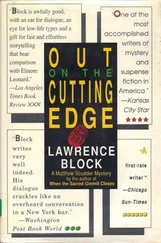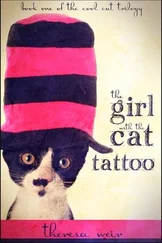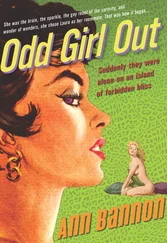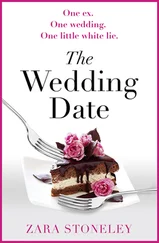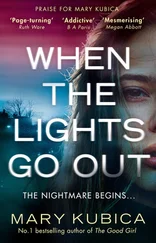Toward the end of the interwar period this area was becoming increasingly Jewish. In 1920, when the houses were new, there were just seven Jewish families on the Pletterijstraat. By 1940 there were thirty-nine. Almost directly opposite Lien’s house stood the Jewish orphanage, which moved into its specially commissioned premises in 1929 and soon afterward began accepting German refugees. Thirty-five thousand moved to the Netherlands after the Nazis took power in Germany.
Those coming to these terraces in the twenties and thirties were not the old Sephardic Jewish families who had escaped to the Netherlands from Portugal in the late fifteenth century. The newer arrivals were German and Polish, but they too were following an established route. Since the eighteenth century, many eastern Ashkenazi Jews, whose first language was Yiddish rather than Hebrew, had migrated to Holland. The first German or Hoogduitsch synagogue was built in The Hague in the 1720s. Over the years, tens of thousands would make their journey across the Continent. Here there were no pogroms, and it was possible to join guilds, to become a freeman of the city, and even to pass the status of freeman down the family line. Although there were areas of the city that were more Jewish than others, there were no lines of division. From generation to generation, the immigrants took on the tastes and the habits of their compatriots and became straightforwardly Dutch. So when Napoleon took direct control of the Netherlands in 1811 and ordered the registration of surnames, many Jews took the opportunity to naturalize theirs. Joseph Izak, for example, as a long-standing citizen, opted for the plain, native-sounding “Joseph de Jong.”
The Portuguese, as the first settlers, remained distinct from these newer, more working-class arrivals. They were a kind of aristocracy, closely integrated with political power and trade. These Sephardic Jews, who had emerged as moneylenders after 1179 when the Third Lateran Council forbade the charging of interest among Christians, had escaped southern persecution and prospered in the seventeenth century in the great ports of Europe’s northern coast. Though less than 0.01 percent of the population, Dutch Sephardic Jews owned a quarter of the sugar plantations in Surinam, and they were crucial to the financial structures of the new republic. It was the Portuguese-Jewish banker Isaac Lopez Suasso, for example, who advanced the necessary two million guilders and arranged the hire of six thousand Swedish mercenaries when William III of Orange set out to claim the British Crown in 1688.
If anything, the Sephardic community in The Hague was even more accepted than that in Amsterdam. It was here, in 1677, that the skeptical Jewish philosopher Baruch Spinoza was buried in great splendor in the Protestant New Church. This was an astonishing gesture of acceptance, even if the church authorities broke up the grave soon after for nonpayment of fees.
Village status, combined with its function as a royal residence, made The Hague an easy place for special pleading. Thus when, in 1690, there was a little local difficulty over some passages in the Talmud, a solution was not hard to arrange. The problem involved the carrying of objects in public on the Sabbath, which was clearly forbidden. The question, though, was what counted as “in public”? In Amsterdam it had been decided that the whole city, as a walled unit, could reasonably be defined as “a home.” The Hague, unfortunately, did not have town walls. Learned rabbis had determined, however, that if the two stone bridges over its canals were to be replaced by drawbridges, then The Hague too would, logically, be a home. In consequence, a Jewish delegation approached the governing magistrate. Might the bridges be modified at their cost? Two years later, in the true spirit of political accommodation, they were demolished and replaced.
German and Polish immigrants living in the Pletterijstraat in the 1920s and ’30s were hardly in a position to incur such expenses, even supposing they had the commitment to that degree of ingenuity in interpreting God’s laws. Yet although not rich, the River District was perfectly pleasant. Then as now, it was a place of diversity, where different races and religions lived neighborly lives. There was, it is true, some resentment among non-Jews at the level of migration, and in response the government had put a cap on numbers. Depending on what circle you moved in, Jews could be feared as socialists, as capitalists, as Zionists, as poor and low skilled, or as rich and overqualified, taking the best jobs. In the 1930s it could be hard for Jews to get a restaurant booking. Still, even in 1937 there was only a 4 percent vote for the Dutch fascist party, the NSB.
—
LEAVING THE OLD ORPHANAGE behind me, I take a turn off the Pletterijstraat onto a side street, hoping to find a café. I pass a primary school with neat Jugendstil lettering over its doors announcing its year of completion: 1923. Since that time a mural has been added that shows a giraffe looking out of a painted window with a smiling girl seated on its back. At ground level there are other figures of children on the brickwork and a Plexiglas sign that tells me this is a Protestant Christian school. Farther up the street I can see a kind of shopping precinct so I head up in that direction in search of a coffee.
When I get there, I see that the precinct is something different from what I expected. It is as neat and tidy as it looked from a distance, with attractively lit shop fronts, but the rows of windows show only women in lingerie perched on barstools with dark red, dimly lit cubicles to the rear. Some of the windows have closed curtains; others display messages such as SENSUAL MASSAGE, TWO WOMEN, or KINKY SEX. Across the street from me there is a steel outdoor urinal where two men are urinating while they survey the scene.
As I walk through, feeling intrusive, it is difficult not to make eye contact with the women. My gaze moves quickly from one window to another and I am conscious of my presence as a time waster as well as a representative of the general crowd of men. Behind the glass in the warm light and with their thick layers of makeup, the women look almost ageless, like bored but desperate sales assistants hovering at the front of a shop. A blond young woman looks across at me, smiling, and then, as I pass, goes back to checking her phone.
—
IN THREE OR FOUR MINUTES I have passed through the precinct and am back on the main road that leads to the station. From here I can loop back to the Pletterijstraat and get to my car.
Once again I am struck by the strangeness of this familiar country, which I left as a three-year-old forty years ago, returning only for the holidays every summer. I am now probably more English than anything, which is why the neat precinct for prostitutes is so foreign to me. The Dutch are pragmatic about these matters: it is logical to have sex or drugs or euthanasia out in the open, honest and regulated, and if it ends up less than a hundred yards from a primary school, that cannot be helped.
This last hour, I feel, has been an immersion into the Low Countries: perfect motorways, a Protestant primary school, a red-light district, and the former home of a Jewish family, now converted into a physiotherapy gym. This is a country of tolerance: letting people get on with things, not minding others’ business if it does not interfere with your own. This makes the Netherlands progressive. But might it also explain why the Germans were so often allowed to act as they did? The Netherlands of the 1930s was still what was called a society of “pillars”: separate strands, such as the Protestants, the Catholics, and the liberals, who brushed shoulders and exchanged polite greetings, but who rarely went further than that. One followed the law and kept things tidy. Everything else was another’s business, no need to interfere.
Читать дальше

